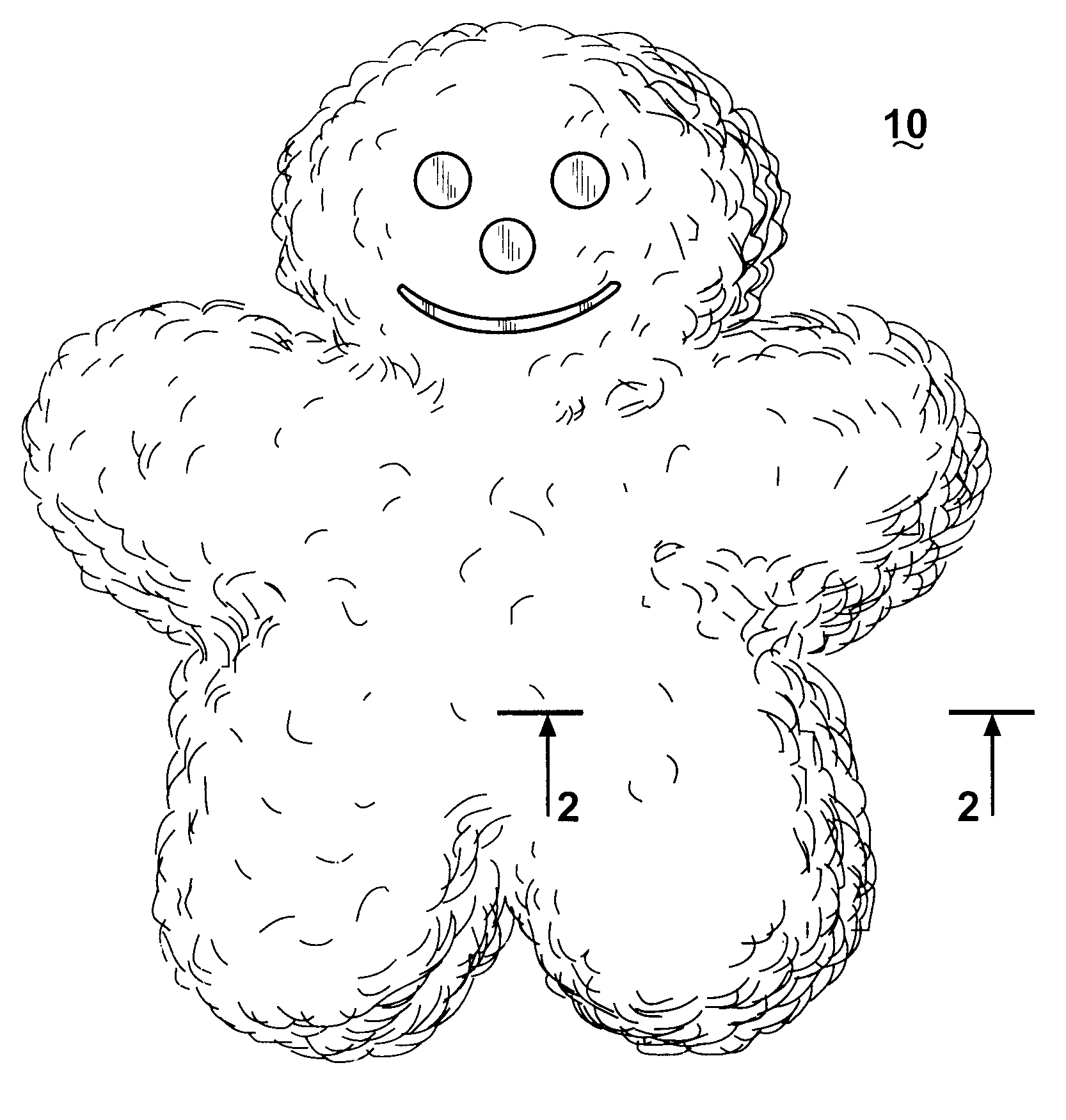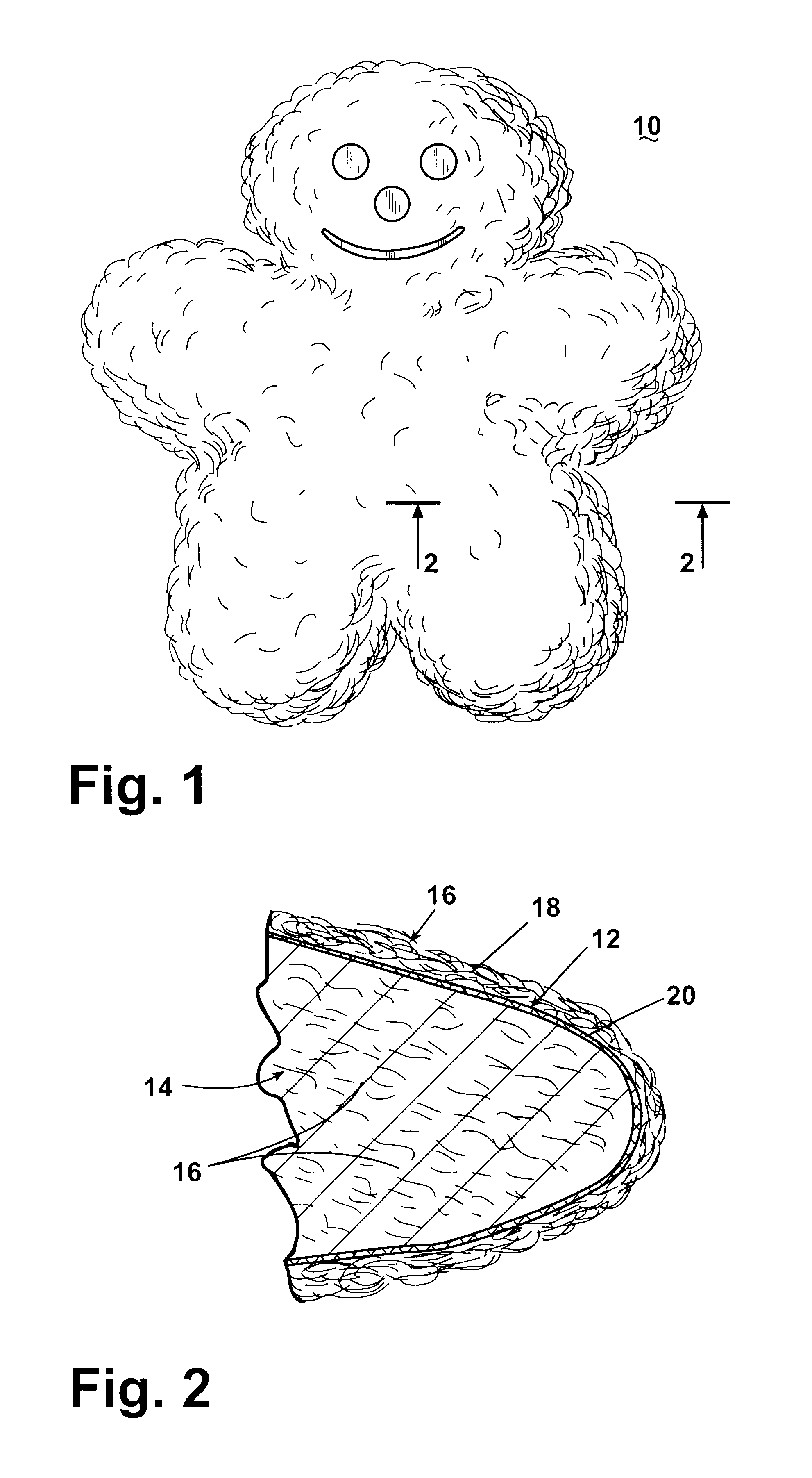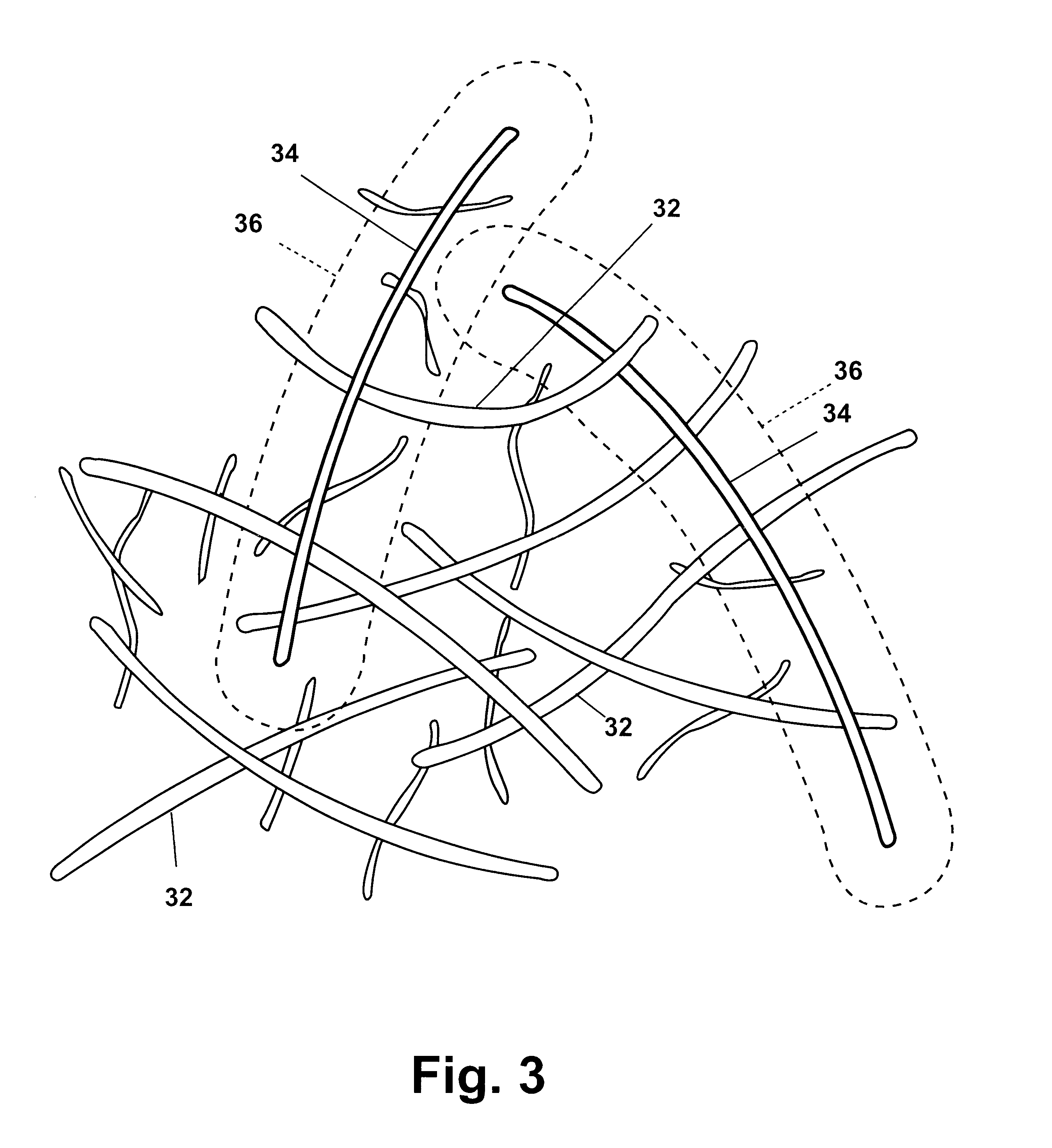Amusement articles possessing microbe-inhibiting properties
a technology of microorganisms and amusement articles, applied in the field of amusement articles, can solve the problems of increasing health hazards for pets using such articles, not addressing problems, and microbial proliferation is especially problematic, and the effect of increasing the risk of infection
- Summary
- Abstract
- Description
- Claims
- Application Information
AI Technical Summary
Benefits of technology
Problems solved by technology
Method used
Image
Examples
example no.2
EXAMPLE No. 2
A 500 cm.sup.3 cover structure in the shape of a bone is to be filled with a fiber blend; and the total blend is to comprise 2.8% of the total containment volume. The average blend concentration of the microbe-inhibiting agent is to be greater than 0.38%. An acrylic fiber (density=1.18 gm / cm.sup.3) in which was incorporated 0.65% triclosan antimicrobial agent during its manufacture, as well as conventional nylon fiber (density=1.14 gm / cm.sup.3) are to be used.
The filling is prepared using the design equations (1)-(6) set forth above. It is necessary to have the microbe-inhibiting acrylic fiber occupy a volume fraction of the containment structure equal to about 1.7%, and to have the conventional nylon fiber occupy a volume fraction of the containment structure equal to about 1.1%. 9.9 gm of the microbe-inhibiting acrylic triacetate fiber (possessing a denier of about 3.5 and cut to a length of about 1.5") was therefore blended with 6.4 gm of conventional nylon fiber (po...
example no.3
EXAMPLE No. 3
A 2000 cm.sup.3 cover structure in the shape of a bear is to be filled with a fiber blend; and the total blend is to comprise 4% of the total containment volume. The average blend concentration of the microbe-inhibiting agent is to be about 0.11%. A polypropylene fiber (density=0.93 gm / cm.sup.3) in which was incorporated 0.2% Tri-n-butyltin maleate (Ultra Fresh DM-50) antimicrobial agent during its manufacture, as well as regular polyester fiber (density-=1.39 gm / cm.sup.3) are used.
Using the design equations (1)-(6) set forth above, it is necessary to have the microbe-inhibiting polypropylene fiber occupy a volume fraction of the containment structure equal to about 2.2%, and to have the conventional polyester fiber occupy a volume fraction of the containment structure equal to about 1.8%. 40.9 gm of the microbe-inhibiting fiber (possessing a denier of about 4 and cut to a length of about 2") was therefore blended with 50.0 gm of conventional polyester (with a denier of...
example no.4
EXAMPLE No. 4
The cover or containment material was constructed from synthetic lambs wool, also known as "fleece," or shearling. The material has two sides: a fleece side, which simulates the fleece of a lamb; and a backing or back-side. The synthetic lambswool may be obtained from Tex-Tenn Corp., (Gray, Tenn.). It is comprised primarily of polyester, but is blended with a small amount of acrylic. The material has a weight of 17.5 oz / linear yard and is obtained on 60"-wide rolls.
Four rolls are suspended on a rack, and the synthetic lambswool is pulled from the rolls in tandem and fed onto the bed of the die-cutting press. A steel-rule die in the shape of a bone (long dimension about 7") is placed on top of the layers of synthetic lambswool and beneath the head of the die press. The head of the die press is then brought down onto the steel-rule die, whereupon it cuts through the four layers of fabric in a single strike to yield four pieces of bone-shaped synthetic lambswool. The piece...
PUM
 Login to View More
Login to View More Abstract
Description
Claims
Application Information
 Login to View More
Login to View More - R&D
- Intellectual Property
- Life Sciences
- Materials
- Tech Scout
- Unparalleled Data Quality
- Higher Quality Content
- 60% Fewer Hallucinations
Browse by: Latest US Patents, China's latest patents, Technical Efficacy Thesaurus, Application Domain, Technology Topic, Popular Technical Reports.
© 2025 PatSnap. All rights reserved.Legal|Privacy policy|Modern Slavery Act Transparency Statement|Sitemap|About US| Contact US: help@patsnap.com



